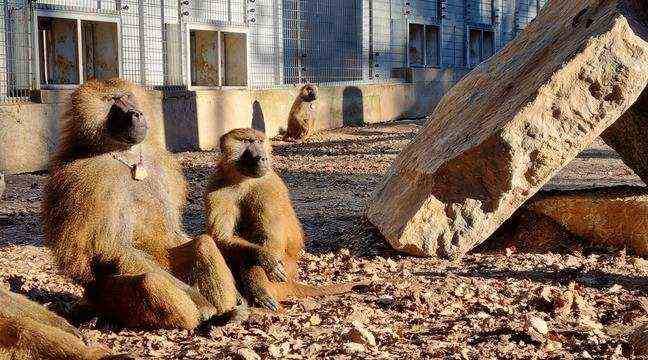Are we really different from animals? Researchers from the CNRS of the University of Aix-Marseille have just provided a new response to this ontological problem, which has agitated humanity since the dawn of time. And this, highlighting the ability of baboons to establish social conventions between them, tends to reduce the gap between man and animal. Because until then, we thought the ability to create arbitrary social conventions to be unique to man.
To achieve this, Nicolas Claidière, Dany Paleressompoulle, Joël Fagot and Anthony Formaux conducted an experiment for more than two years on a group of 19 baboons. The coordination problem was quite simple. “Two different images were randomly selected from a set of images and presented to two monkeys. If they wanted to be rewarded, the baboons had to choose the same image, ”the researchers explain. This problem, not having a single correct answer, required individuals to agree on the choices to be made, beyond imitation and repetition, the combinations of images being random and multiple.
“In this device, the monkeys were free to participate or not in the experiment. That is to say that this game was at their free disposal, and they had the choice to participate or not ”, continues Nicolas Claidière, primatologist.
“We thought the monkeys were going to act in imitation, but…”
“The monkeys quickly developed a hierarchical organization of images,” note the authors of the study. The pink square was preferred over the blue square, while the yellow square was chosen when presented against the pink… “We thought the monkeys were going to act in imitation, but in fact not. They are really self-organized ”, underlines the primatologist. It was by repeating the experiment blindly, without the two participating monkeys being able to see each other and that the performances remained identical, that the researchers were able to demonstrate it. “Of course, they were not discussing the strategy among themselves, but they agreed in advance and coordinated on the choices to be made,” he observes.
An experience that puts an end to the debate on the appearance of conventional phenomena of which “theories said that they could not appear without imitation or language”. The next step for this team from the Rousset primatology station is to study the degree of cooperation that apes are capable of. An object well studied in large primates (chimpanzees, gorillas), but little in small apes.
This experience comes from “reducing a little the space between man and animal.” But there is still so much room ”, concludes the researcher, guided in his work by“ the human / animal comparison and the understanding of why, ultimately, humans are not so different from them ”.

